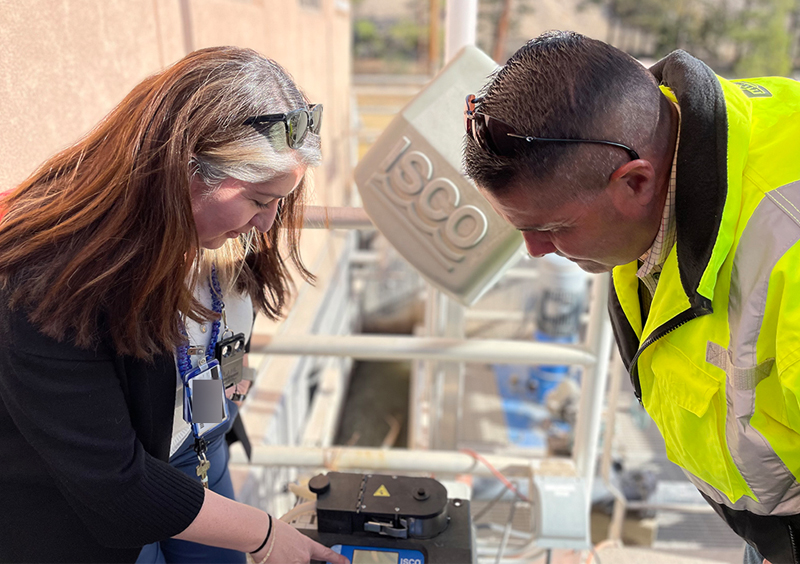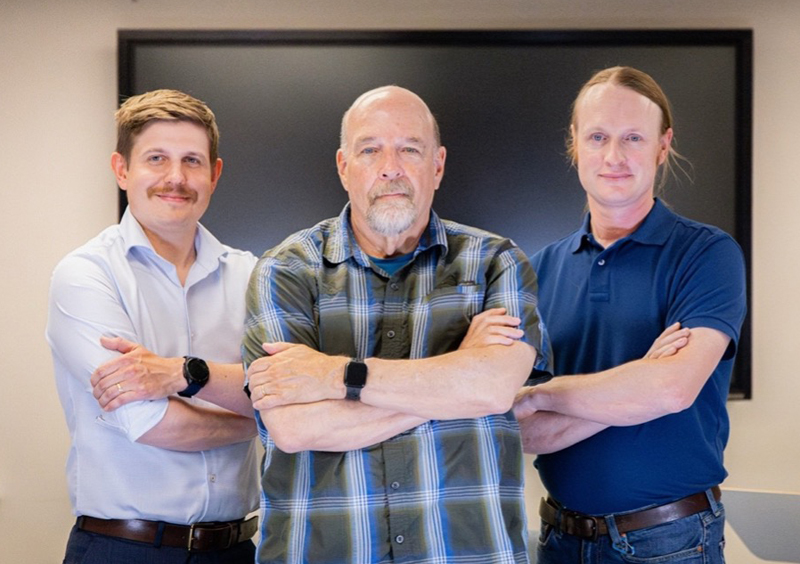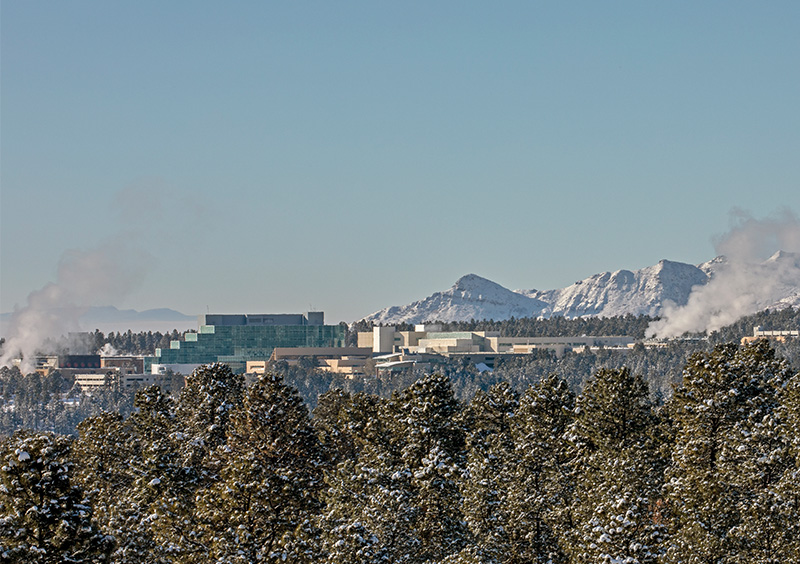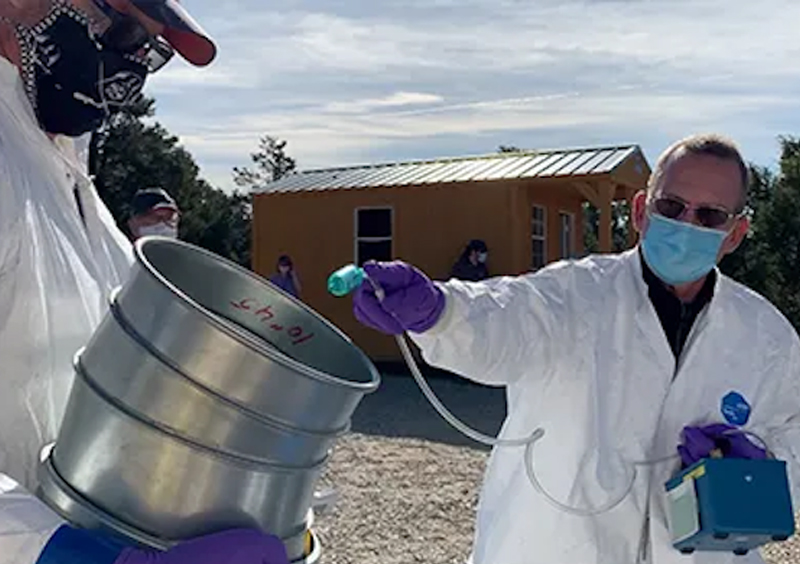They’re arguably the most talked about chemicals of our time, pervasive in everyday products and linked to a litany of adverse health effects. They are so widespread, in fact, that they’ve been detected in snowmelt on Mount Everest, the highest point on Earth.
Known as PFAS, or per- and polyfluorinated alkyl substances, high levels have been found in the environment nationwide, but Los Alamos National Laboratory has successfully kept levels well below regulatory limits to protect human health and the environment.
It’s estimated that 15,000 PFAS chemicals exist in everyday products ranging from nonstick cookware, to moisture-wicking clothing, to adhesives, plastics and fire retardants. To that end, the Laboratory is seeking to detect PFAS in the products it uses, reduce sources that contain PFAS and find alternative products without these contaminants.
Led by Sarah Holcomb, the Environmental Compliance Programs group has spearheaded these efforts, and as scientists and regulators strive to better understand the contaminants’ properties and effects, her staff has been working to identify and begin eliminating PFAS sources on site. They’re also searching for ways to better remove the chemicals as they’re processed at the Lab’s wastewater treatment facilities — a task municipalities and industrial plants across the country are grappling with.
Preparing for the future, reducing the contaminant at its source
Since 2021, samples of treated wastewater collected on Laboratory property and analyzed for PFAS have shown very low PFAS detections — well below the state threshold of 70 micrograms per liter.
However, when the Lab’s surface water permit is renewed, more PFAS chemicals will be added to the list for monitoring. In addition, while the EPA’s new federally enforceable drinking water standard for PFAS doesn’t apply to the Lab — as wastewater from on-site facilities doesn’t enter the public water supply — the standard could be adopted for surface waters soon. Therefore, the Lab is intensifying its awareness of PFAS in anticipation of regulatory agencies raising the bar on monitoring the contaminant.
To get ahead of these changes, Holcomb and her team, along with the Lab’s Pollution Prevention program, are working to identify PFAS in products the Laboratory uses to the greatest extent possible. They’re sampling and sending for analysis sources they believe could prove problematic, then assessing whether replacement of the PFAS-containing product is warranted.
“It’s in so many different products, including basically anything that has a plastic component,” Holcomb said. “Also, information that accompanies chemicals doesn’t always indicate when they have PFAS in them. Manufacturers can list PFAS as a proprietary chemical from a business-law perspective, which means they don’t have to disclose their secrets to competitors.”
Holcomb is certain about one PFAS source at the Lab, though, which is a type of firefighting foam known as aqueous film-forming foam.
In 2020, the Lab’s Sanitary Waste Water System — or SWWS, pronounced “swish” — stopped accepting wastewater from the Lab’s fire suppression systems that contained the foam. Since that time, the mixture has been emptied into totes and stored on Laboratory property, awaiting disposal.
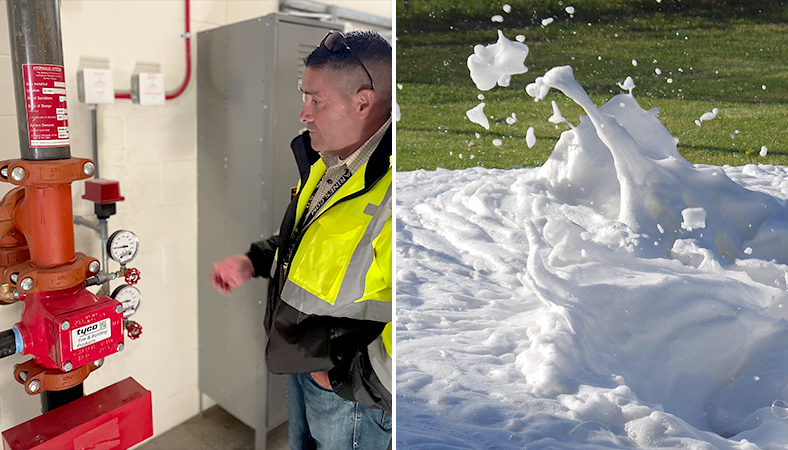
The Los Alamos County Fire Department, which has a footprint on Lab property, also procured a reduced-PFAS firefighting foam, Holcomb said, and she hopes to overcome the challenges of transitioning to an entirely PFAS-free firefighting foam soon.
More mitigation measures
Beyond source reduction, Holcomb’s group is exploring ways to enhance SWWS’s capabilities for treating PFAS.
SWWS is effective at removing some PFAS from the Lab’s wastewater, and to treat it even further, the water gets pumped to the Sanitary Effluent Reclamation Facility, where it undergoes reverse osmosis. Then it goes to the Strategic Computing Complex, where it's used in the building's cooling towers to compensate for the heat produced by supercomputers. All this treatment helps keep PFAS levels below regulated limits.
“We’re in good shape now with our PFAS levels,” Holcomb said, “but as regulations become more stringent, we’ll have to adjust our approach to compliance. This means we’ll need to understand sources better and have conversations about potential replacements for some PFAS-containing products.”
“We have environmental and waste management professionals who saw the writing on the wall with PFAS — that more safety measures would be coming and that a secure, compliant disposal pathway would be needed for on-site sources,” said J’nette Hyatt, senior director of the Lab’s Environment and Waste Programs. “They’ve been incredibly proactive to protect employees, the environment and the public. Now we need everyone on board, especially those who generate PFAS-containing waste, to help reduce those sources even more.”
LA-UR-25-25443
